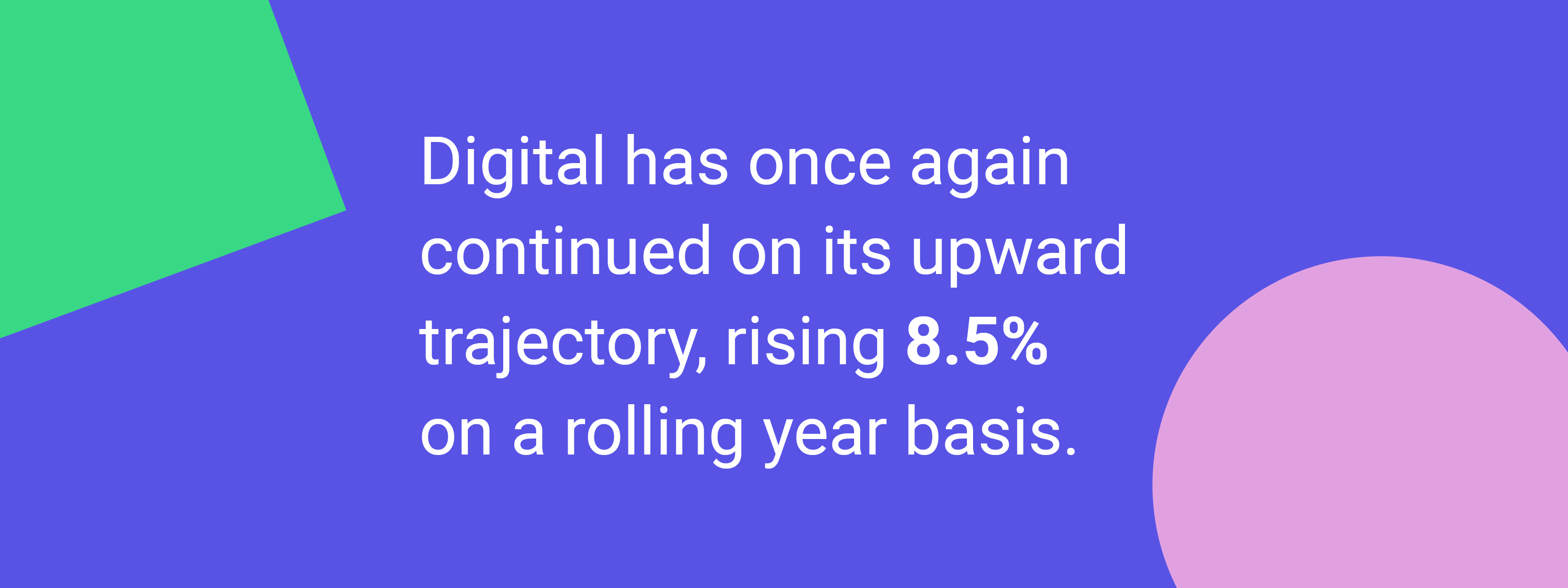Read time 2 mins
Author Alex Preece


Peak or Trough? Will the season’s Peak Season prove to be the Most Wonderful Time of the Year for Retailers?
Given the general sense of economic uncertainty at present, there has been plenty of speculation surrounding the prospects for the peak retail shopping season between now and Christmas. How, for instance, will consumer spending habits be impacted by rising inflation, interest rates and the economic turmoil seen in recent weeks?
The short answer is nobody really knows for sure, but we can look to experience for some clues about what might happen this year. Over the past 25 years, for instance, the UK has seen significant growth in overall retail sales volumes, which have more than doubled since 1989, according to the ONS.
And in the past 15 years, online retail sales have taken major market share from the High Street. In 2007, online accounted for just 3.4% of all retail sales – in 2020, this had jumped to nearly 30%. Collectively, the retail industry in the UK now consists of over 300,000 separate businesses, employing over three million people (that’s over 8% of all UK jobs). The bottom line? In 2019, retail sales in the UK were worth £439 billion.
More specifically still, consider the peak shopping season in 2020, where lockdown rules restricted how families and friends could gather depending on where they lived from early November and into 2021. This had an unprecedented impact on shopping habits and was a source of major concern across the sector.
Looking at data from the British Retail Consortium (BRC), in 2020 overall, total sales declined 0.3% compared with 2019, while in December, sales increased by 1.8%, against a growth of 0.2% in December 2019. As subsequently explained by PwC, “Despite a dramatic 2020, retail performed better than many expected, recovering quicker than most other industries. Not all categories did well, but online shopping boomed, consumer sentiment remained resilient and Christmas trading held up.”
Retail resilience
Among the many lessons to be drawn from retail’s recent history, it’s clear that it is an irrepressible sector of the economy. Thankfully, we are now in a post-pandemic environment, even though a sense of shared economic unease has, for many, resurfaced in late 2022. But as PwC puts it, despite economic and supply chain pressures, there remains “growth opportunities.”
It’s worth noting that in their 2022 Retail Outlook, they said: “Generally, retail held up well in 2021, and Christmas results were broadly positive. That gives cause for optimism into 2022, even with challenges around inflation, interest rate and tax rises, because many opportunities remain: resilient consumer sentiment, employment and wage growth, combined with lockdown savings and pent-up demand.”
Looking at gift card and voucher sales specifically, GCVA data from the first half of this year gives some important context for 2022 as a whole. As their analysis explains, “In a trading period stalked by rising inflation and cost-of-living fears, there was a resilient performance from the Gift Card and Voucher Association (GCVA) data submitting membership that led to an overall rolling year rise in sales of 1.1%.”

Gift cards are a particularly popular peak item. In December 2021, for instance, 27.1% of consumers purchased a gift card for someone else compared to 25.2% in 2020. And it is predicted many will use gift cards as an innovative way to lessen the impact of the cost-of-living crisis, to manage overall spending on presents and lessen the extra costs associated with physical gifting.
Businesses are also turning to digital gift cards as a way to strengthen their employee benefit schemes by using them to reward their employees and support their staff.
Given ongoing supply chain issues faced by retailers, the positive knock-on effect for the gift card and voucher sector is clear, with over 40% of respondents to GCVA research saying they planned to purchase digital gift cards in coming months as it has become more difficult to purchase physical gifts.
It will be fascinating to review the data early next year as retailers announce their results and the industry can more clearly understand how the economic factors play out. We’ll be back with some new year analysis in January.







